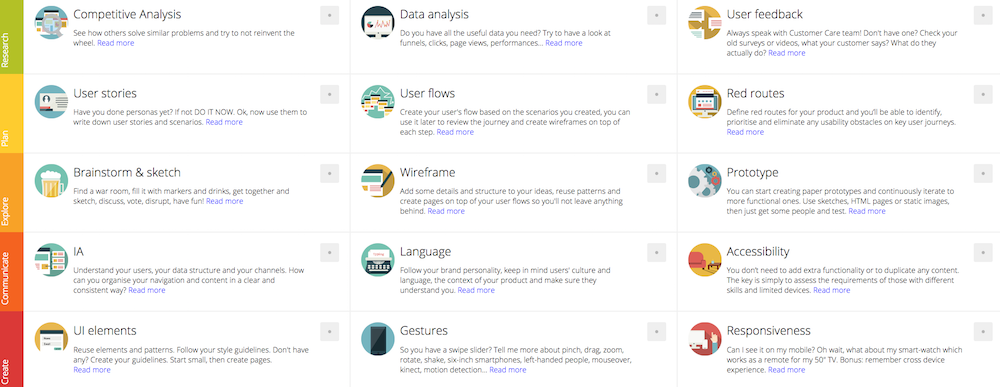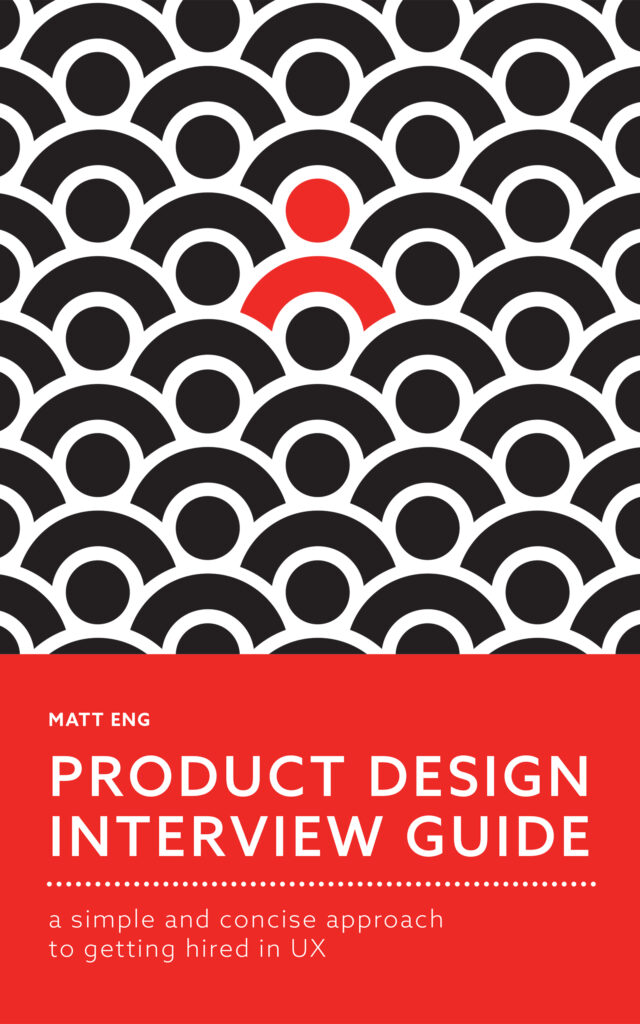Tech’s embrace of User Experience is fairly new. While some argue that we have been thinking about it for years, terms such as UX are just now becoming common in current business and design vernacular. So, it is not uncommon for miscommunication on what it is and how it translates to software development. When I started in the industry, I may have understood the deliverables required. I did not have a clear idea of the process, nor did I know how to clearly explain it to my team or stakeholders.
Here is a list of free resources online that helped me better understand the UX Process.
User Experience Core Concepts
UX Mastery’s “UX Process”
This is a short and concise version of the UX process. It breaks it down into five steps; Strategy, Research, Analysis, Design and Production.
It also connects the process to other methodologies, such as the Agile Development Principles and the Lean Startup. Connecting the UX process to other methodologies can be a great way to show how all of these are intertwined with software design and development.
Smashing Magazine’s “Beyond Wireframing: The Real-Life UX Design Process”
Smashing Magazine has put together a much deeper and more comprehensive examination of the UX process as well as its misconceptions.
This article discusses techniques used for each step and the reason each step is necessary. Seeing these can help inform new designs and remind the veterans why we use certain techniques. One of the biggest takeaways is that it takes time to explore and inform the design.
Clear Guide for Jump Starting your UX Career
Career Foundry “The UX Design Process: An Actionable Guide To Your First Job in UX”
Career Foundry has an in-depth look into why UX is becoming so important for helping the user and building the business, why so many companies want user friendly interfaces, and why design has to almost too easy to use. If a site is easy to use, and customers are happy, they are more likely to recommend it to friends and share it via social media. This ups the traffic to the site.
Not all designers are suited for every part of the process.
This synopsis of the UX Process breaks down aspects of not only the actual process, but of what kind of designer is best suited for creating them. The explanation of the UX process from research to testing is incredibly in-depth. So, not all designers are skilled for doing each step. A UX researcher will have a skill set that is unique to the research phase. A Visual designer will be more suited for communicating the brand through the software.
UX Artifact Checklist for your next project
After you read through the previous articles, this may be the best resource to follow up with. It is a visual display of nearly every artifact that can come from each step in the the process. It has examples of most, if not all of the artifacts a designer can make. You won’t have to use all of these techniques all of the time, but as you build your experience you will understand when each of these are best utilized.
Most employers understand that you are not going to enter a job role full of UX wisdom. They will expect you to have the forethought and ability to find those answers.
As you start to absorb these online resources, do not neglect the old fashion way of learning: reading books. Here’s a post on books I find to be essential for designers.
If you’re interested in learning more about UX, read my post on online courses. Or if you’re ready to take the leap to a UX bootcamp, check out this post.

